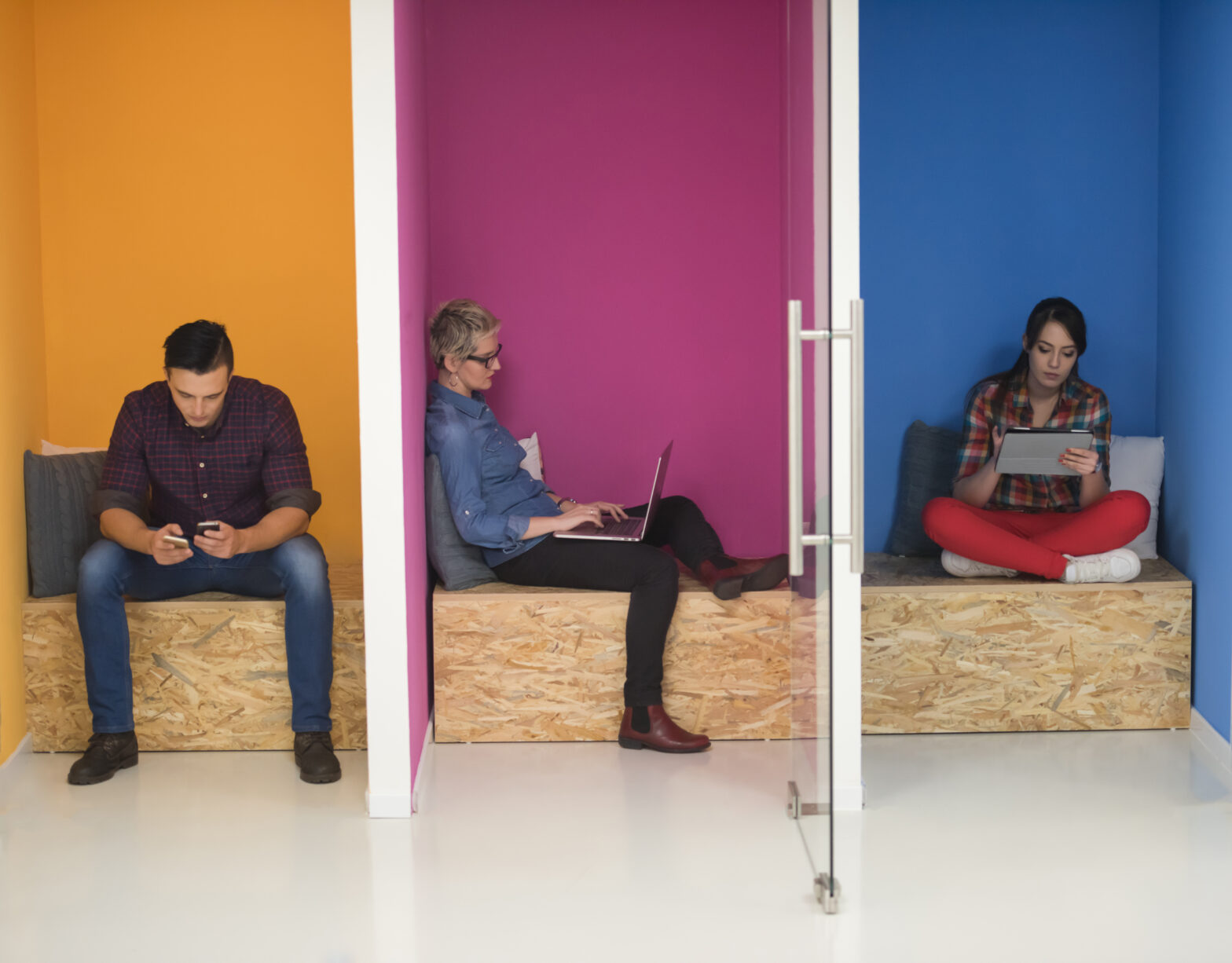Happy workers will be more satisfied with their jobs, more successful and easier to work with. In contrast, physically and emotionally uncomfortable employees will find it more difficult to concentrate, communicate and complete tasks and objectives. The key to all of this is the work environment. Here are a few tips to creating perfect office conditions.
Improve communication channels
Silos are a drain on enterprises as employees and teams will be less likely to share vital resources and ideas, or air suggestions about improving work methods. Collaboration and communication are key, so ensure everyone has the means to contribute and can do so quickly and efficiently.
Employees also feel valued and more motivated when they know their work contributes to the bigger picture and they receive some sort of positive reinforcement. Take the time to give employee-specific feedback and discuss any of their concerns, and dovetail their contributions with broader business objectives.
Approachable and flexible
Managers should also be open to feedback, and should focus generally on being an understanding leader, as this is known to encourage better production. Employees should also have a degree of flexibility in how they complete their work.
The Funtrepreneur president, Ashley Judge, adds: “Unless it conflicted with a meeting, I wouldn’t think twice about scheduling a midday doctor’s appointment or more trivial personal appointment, such as a haircut, and I encourage [my team] to do the same,” Judge said. “A trusted, hardworking employee should be able to schedule their day like a CEO.”
Team and unity
Fostering a strong team spirit can help to bridge the gap between individuals and empower them to come together and maximise productivity.
There will always be clashes in perspectives and working styles but team-bonding activities and other events, such as celebrating birthdays, can promote strong group cohesiveness, which again improves communication and makes every little task that bit easier. Open feedback will also ensure the team knows where they stand and will help them to work towards goals and objectives.
Climate control
Promoting more effective personal interactions and adopting culture changes can transform an environment but employees need to be in the right mindset to maximise their productivity. In order to create a pleasant space that encourages the best work, owners and managers should take more care with the design, lighting, temperature, and humidity of office locations.
Lighting
Lighting has a direct impact on employee productivity, as areas that are too dim force the eyes to work harder to read information, which can break focus and cause headaches; not an ideal situation in today’s increasingly demanding and time-sensitive business world.
Harsh artificial lighting is also undesirable, as it can cause migraines and is known to have a detrimental effect on a person’s sleep patterns, which is a sure-fire method to reducing productivity in the long term. Instead, the use of natural light should be prioritised, as this will improve a person’s mood and enable them to complete work in optimal conditions. The recommended limit for light for working environments is between 300 and 500 lux.
Colours and furniture
The colour of the office space and how it is furnished can also affect an employee’s productivity. Colours should be tailored to the industry and work type, so, for example, yellow could be used to encourage creativity in graphic design labs, while blue with its calming tones is well suited to rooms where mental focus and critical decision making is required. Think about colours for your furniture requirements, and ensure chairs and any other furnishings are stylish, functional and comfortable for all to use.
Temperature
A recent study found that getting the temperature just right can improve employee collaboration, boost productivity and increase job satisfaction, while extremes can make workers slow and even sick.
Incredibly hot conditions in Australia cost the economy US$6.2 billion, so it certainly pays to take heed of the thermostat. Facebook founder, Mark Zuckerberg, opts for a cool 15C (59F), which is below the minimum working temp in the UK (16C), but UCL Energy Institute researcher, David Shipworth, states that while it is impossible to pin down exactly, the ideal lies somewhere between 22C and 24C.
Humidity
Creating the perfect environment also requires enterprises to track humidity levels, as condensation can lead to damp and mould growth, which is not conducive to a productive workspace.
Tackling this problem quickly is vital, as merely increasing indoor temperatures can be energy- and cost-intensive. Fortunately, there are solutions such as Andrews dehumidifiers which can eliminate problems and maintain the correct ambient conditions in the long term.
Use of space
Also, think about how you can best utilise a workspace to actively facilitate an employee’s tasks and roles. For example, ensuring storage is within close proximity of a team that uses it regularly will save employees from long walks to retrieve resources.
Design should also take into account “decluttering” and the idea of providing just the absolute essentials to focus the mind. A study by neuroscientists at Prince University found physical clutter increased employee stress and decreased performance, so try to use small storage spaces and conduct monthly reviews to clean, sort and discard non-essentials.
Nurturing your workforce with positive triggers and habits can have a staggering impact on the quality of work they produce on a daily basis. When added up over a year, it can really make a difference, so always prioritise and continue working towards creating the perfect working environment.
See also: The ideal work environment






